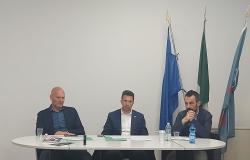
“I had a terrible experience, I almost died, I escaped by miracle!”. The life of the pioneers of modern physics could be decidedly dangerous. The Dutch scientist Pieter van Musschenbroeck, who in 1746 wrote to Venetian colleague Giovanni Poleni – then a professor at the University of Padua – illustrating his experiments with an electrical device he was working on, what we know today as the Leyden jar.
The Leyden jar, named after van Musschenbroeck’s hometown, is a scientific instrument that can accumulate a significant amount of electrical charge. If you touch the charged electrode, as the Dutch physicist did, the shock is guaranteed, and a strong one at that. Luckily for him, not so much as to prevent him from telling the electrifying experience to Poleni, whose interest in experimental physics and laboratory demonstrations as a teaching tool he knew well. Just over a century had passed since the death of Galileo and Poleni, called to teach in the same university in which the father of the scientific method had spent the 18 best years of his life, was very clear about how much the study and teaching of physics was could only be based on experimentation and practical demonstration of theoretical laws.
For this reason Poleni started the creation of a physics laboratory, an educational and research laboratory which included around 400 instruments – partly made in the Atelier of the brothers Jan and Pieter van Musschenbroeck – which soon became a point of reference in Europe. Just as it is today the Museum of the History of Physics of the University of Padua, which takes its name from Giovanni Poleni and which is currently competing for the possibility of becoming the European museum of the year.
The Poleni Museum is, in fact, among the finalists of the 2024 edition of the European Museum of the Year Award (Emya 2024), which will be awarded in Portimão, Portugal, in early May. A very prestigious recognition, so much so that its roll of honor includes museums such as the Rijkmuseum in Amsterdam, the British Galleries of the Victoria and Albert Museum in London, the Danish National Museum in Copenhagen, the Olympic Museum in Lausanne and the Guggenheim in Bilbao. Only two Italian museums have been selected for the final phase of the prize: the Poleni, in fact, and Villa Freischuetz in Merano and they will therefore compete for the possibility of being the first museum in our country to win the coveted prize.
The Physics Museum of the University of Padua has its original nucleus in around a hundred devices from the Poleni Cabinet which have survived to the present day. After Poleni, the collection was gradually enriched by his successors over the centuries and up to the present day. The instrumentation, intended primarily for the teaching of physics but also for research activities, was continuously adapted according to scientific developments and over the years thousands of new devices were acquired, as well as some older devices dating back to the sixteenth and seventeenth centuries.
During the Second World War and in the following years the collection was neglected and only in the 1970s did the Paduan physicist Gian Antonio Salandin recover it and valorise it for museum purposes. Today around 500 pieces are exhibited in the Museum, housed in the Department of Physics and Astronomy, open to the public and home to numerous educational events. With the Museum “we want to bring out the connections that have linked physics to other disciplines, such as medicine, art, architecture, music or psychology, to reaffirm through the tools of physics what we could call the “multiculturality” of science”, says Sofia Talas , curator of the museum, who continues: “At a time when knowledge appears extremely fragmented, it is important to show how knowledge is profoundly interdisciplinary. The separation between knowledge, which often hinders the progress of knowledge, did not exist until relatively recently recent ones. Giovanni Poleni himself, whose contributions have embraced countless sectors of knowledge, from ancient architecture to physics and astronomy, is an example of this”.
He was, in fact, called in 1729 by the Serenissima Republic of Venice to verify the structural anomalies present in the domes of the basilica of St. Mark in Venice, while only a few years later he created the divulsion machine, now visible in the museum, which he used to study the resistance of the materials during the restoration of the dome of St. Peter’s in Rome. In 1743, at the request of Pope Benedict XIV, Poleni had studied the structure in detail, concluding that it was necessary to fill the cracks and reinforce the dome with iron rims.
The Poleni Museum therefore wants to be testimony to a precious past, but also a multidisciplinary tool for interpreting and building the future. “With our collection we stimulate questions and reflections on the current relationships between science and society,” says the curator, who continues: “What does success or failure mean in the scientific and technological field? How important is the social, economic and political context for scientific and technological developments? And what does it mean to make distinctions between fundamental research and applied research when we see, in history, research sectors – such as the study of electrical discharges in rarefied gases – which did not produce results for almost two centuries, only to then open the doors of modern physics and bring important applications such as television or neon lighting? We do not want to provide answers, but only to stimulate reflection and critical thinking, especially in young people, the future citizens of tomorrow. With a careful eye on sustainability – for the installations we focused as much as possible on the reuse of materials – and also going a little against the grain.”
Yes, because unlike many other modern museum installations today, Sofia Talas proudly points out that “we did not use any multimedia tools or immersive experiences in the permanent exhibition. We preferred to leave all the space to the beautiful historical scientific instruments of the University of Padua, which have not one, but a thousand stories to tell the public.”
Information and times for visiting the museum:
https://www.musei.unipd.it/it/fisica
Tags: Poleni Museum History Physics University Padua running European top





